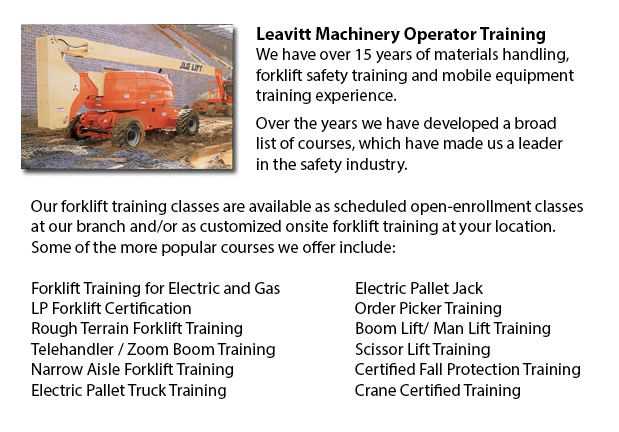
Aerial Boom Lift Ticket Whitby - Aerial forklifts might be utilized to accomplish a lot of distinctive tasks executed in hard to reach aerial spaces. A few of the tasks associated with this kind of lift include performing routine preservation on structures with elevated ceilings, repairing phone and utility cables, lifting burdensome shelving units, and trimming tree branches. A ladder could also be used for some of the aforementioned projects, although aerial hoists offer more safety and stability when properly used.
There are a couple of distinctive types of aerial lift trucks accessible, each being capable of performing moderately unique tasks. Painters will usually use a scissor lift platform, which can be utilized to get in touch with the 2nd story of buildings. The scissor aerial jacks use criss-cross braces to stretch and enlarge upwards. There is a table attached to the top of the braces that rises simultaneously as the criss-cross braces raise.
Bucket trucks and cherry pickers are a different variety of aerial hoist. They possess a bucket platform on top of a long arm. As this arm unfolds, the attached platform rises. Platform lifts use a pronged arm that rises upwards as the handle is moved. Boom lift trucks have a hydraulic arm that extends outward and hoists the platform. All of these aerial platform lifts require special training to operate.
Through the Occupational Safety & Health Association, also called OSHA, education courses are offered to help make certain the employees satisfy occupational standards for safety, system operation, inspection and maintenance and machine weight capacities. Workers receive qualifications upon completion of the course and only OSHA licensed workers should run aerial hoists. The Occupational Safety & Health Organization has formed rules to maintain safety and prevent injury when utilizing aerial platform lifts. Common sense rules such as not utilizing this piece of equipment to give rides and ensuring all tires on aerial lift trucks are braced so as to prevent machine tipping are observed within the guidelines.
Sadly, statistics expose that in excess of 20 aerial hoist operators pass away each year while operating and just about ten percent of those are commercial painters. The majority of these incidents were caused by inadequate tie bracing, for that reason some of these could have been prevented. Operators should make certain that all wheels are locked and braces as a critical safety precaution to stop the machine from toppling over.
Marking the encompassing area with observable markers need to be utilized to safeguard would-be passers-by so they do not come near the lift. What's more, markings must be set at about 10 feet of clearance amid any electrical cables and the aerial lift. Hoist operators must at all times be well harnessed to the hoist while up in the air.
-
Wheel Loader Operator Training Whitby
Wheel Loader Operator Training Whitby - To be able to lift considerable loads, industrial cranes use levers and pulleys. In the past, Roman people used cranes to be able to erect large monuments making the origin of these equipment at least two thous... More -
Aerial Lift / Boom Lift / Man Lift / Scissor Lift Training in Whitby
Scissor lifts are lift truck tables which lift up materials and people and supplies vertically. They are normally utilized in commercial, industrial and construction environments. A common use of scissor lifts is for lifting or lowering construction... More -
Manlift Operator Training Whitby
Manlift Operator Training Whitby - A specialized kind of hydraulic platform is called an aerial lift or a man lift. It is intended to lift an individual vertically up and down and thus, is likewise known as a vertical personnel lift. This machinery i... More -
Aerial Lift Ticket Whitby
Aerial Lift Ticket Whitby - A boom truck is frequently recognized by the cable and telephone business vans that have the extended arm folded over their roofs. Commonly, a bucket-like apparatus sits at the extension of extendable arms. Often known as... More -
Crane Training Whitby
Crane Training Whitby - Overhead cranes are otherwise known as bridge cranes. They are a kind of crane which has a line and hook mechanism which runs along a horizontal beam which runs along two widely separated rails. Numerous overhead cranes could... More -
Forklift Certification Schools Whitby
Forklift Certification Schools Whitby - Within North America, forklift certification is mandatory, making forklift training programs essential for both the company and their employees working as operators of forklifts. Forklift training focuses on he... More -
Crane Safety Training Whitby
Crane Safety Training Whitby - Companies and crane drivers need to be aware of the issues connected to crane safety. Legislation provides rules for the safe operation, inspection and maintenance of lifting machinery all around North America. Crane Sa... More -
Overhead Crane Certification Whitby
Overhead Crane Certification Whitby - The overhead crane certification course is a course that is designed to assist trainees, even if they have literacy or language restrictions. The program consists of a classroom theory part and a practical hands-... More

Forklift Training Whitby
TOLL FREE: 1-888-254-6157
Whitby, Ontario
forklifttrainingwhitby.com
Email Us
About Us


